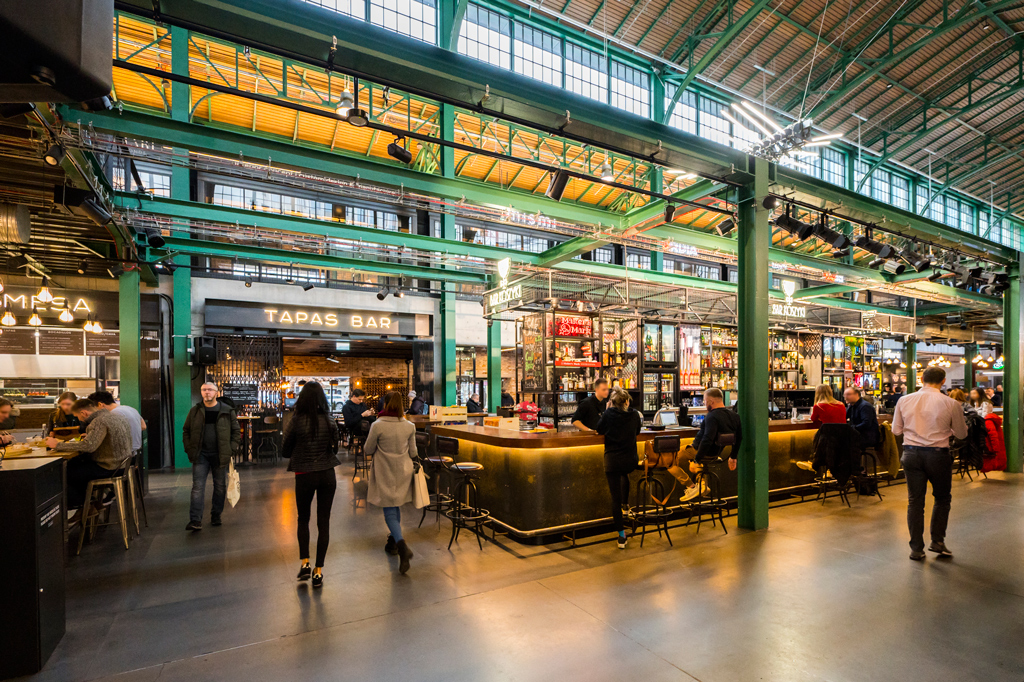Warsaw in winter—more than just Carnival...
Blending an extraordinary harmony of history and modernity, Warsaw is rapidly becoming one of the most fascinating capitals in Europe.
Whether you go for a drink with a breathtaking view of the city skyline, a walk along the Vistula River, or simply get off the beaten track to discover a different, more authentic and peaceful side of the city, you certainly won’t be disappointed.
Winter Warsaw has a unique charm, especially after the holiday season, when the tourist crowds go home and the city becomes more intimate and laid back. This is the perfect time to discover the capital’s charms at your leisure, admiring its diversity and unique sites that take on a special ambience in winter.
The Warsaw tradition of visiting nativity scenes—the magic of the Old Town
In Warsaw there is a beautiful custom that has united the capital’s inhabitants for years and draws guests —visiting nativity scenes during the Christmas season, until February 2, or the Feast of the Presentation of the Lord, also known as the Feast of Our Lady of the Thunder Candle. This is when the holiday season symbolically ends and nativity scenes disappear from churches to return again the following year.
At this time, the Old Town transforms into a place for exceptional strolls. Varsovians, often in whole families, visit local churches to admire a variety of scenes—from the traditional, marked by simplicity, to intricately decorated artistic installations. Each tells its own story, and their diversity makes every walk a fresh discovery.
The Moving Nativity Scene in Capuchin Church—a magical gem of winter Warsaw
Hidden in the heart of Warsaw, in Capuchin Church on Miodowa Street, the Moving Nativity Scene is a real winter gem that delights with its uniqueness and magic. The first version of the scene was presented in 1948 and it has continuously attracted residents and visitors ever since, becoming one of the city’s most beautiful Christmas symbols.
I am from Warsaw and have beautiful memories connected with the Moving Nativity Scene. When I was little, my parents and I used to go there every year during the Christmas season. At a time before computers, smartphones and other technology, this nativity scene was absolutely magical for me and my siblings. We could stand for hours gazing at the moving figures, listening to the soft music.
The Warsaw Photoplasticon—a hidden treasure in the centre of the capital
The Warsaw Photoplasticon is a worldwide one-of-a-kind. More than a century old, this apparatus for viewing three-dimensional stereoscopic photos takes visitors back in time; it could simply be called the great-grandfather of cinema.
The Warsaw Photoplasticon is one of only a few devices of its type globally still operating.
What distinguishes the one in Warsaw is that in a city so badly damaged in the war, it has stood in the same place the whole time and has been operating continuously for over 110 years. This silent witness to the history of Warsaw is a unique experience that lets us travel back in time.
Hala Koszyki—history and modernity
Not far from the photoplasticon is Hala Koszyki. This is one of the most interesting places in Warsaw combining history with modernity. Built in the early 20th century as a market hall, it witnessed many changes over the years, until finally in 2016 it underwent a thorough renovation. Today, it is a vibrant gastronomic centre where dishes can be sampled from every corner of the world. Its delightful industrial character blends with modern décor to create a unique atmosphere. It is the perfect place to feel the pulse of modern Warsaw while at the same time feeling like you are at the heart of the city’s history.
Fat Thursday—tradition, doughnuts and the flavours of Warsaw
Fat Thursday (tłusty czwartek) is one of the most anticipated days in the Polish calendar, full of sweetness and tradition. This custom dates back to the 16th century, when on the last Thursday before Lent, as in other European countries, Poles tried to “get rid” of all fatty foods in order to start fasting. On this day, doughnuts containing a variety of fillings, most often plum or rose jam, were especially popular. It was a time of plenty, when people could eat what they wanted before the period of abstinence commenced.
This year, Fat Thursday falls quite late, on February 27, and it is primarily a feast of doughnuts, which are an integral part of this tradition. The doughnuts on this day are more exquisite, often stuffed with cream, chocolate or other delicious fillings, and glazed or covered with icing sugar. Warsaw has many places where you can savour exceptional doughnuts.
In Warsaw, you can find delicious doughnuts practically everywhere, but those served at one of the city’s oldest and most valued patisseries, ‘Blikle’, are truly legendary.
The history of this iconic Warsaw cake shop dates back to 1869, and Blikle doughnuts are traditionally filled with rose jam and have a unique and unparalleled flavour, thanks in part to many years of work on selecting the right ingredients.
Every year on Fat Thursday, long queues of foodies faithful to tradition stand in line at the bakery on Nowy Świat.
Author: Joanna Bonini, Warsaw guide
For more tips on how to visit Warsaw sign up for our newsletter and stay up to date!
* By clicking the ‘Subscribe’ button you consent to receiving the newsletter from us and accept the Regulations of the ‘Newsletter’ service. We will process your e-mail address for the purpose of sending you the newsletter. The administrator of your personal data is the Warsaw Tourism Office. More information on the privacy policy and cookies policy and clause concerning the processing of personal data.






